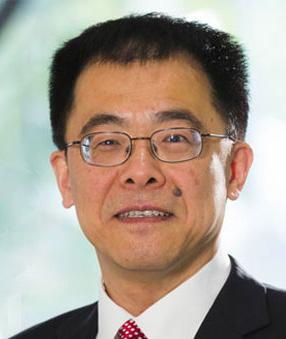
3 minute read
Jian-Feng Nie Awarded the Prestigious Materials Australia Silver Medal

Professor Jian-Feng Nie, a globally recognised authority in physical metallurgy, has been awarded the Silver Medal by Materials Australia. This is the institute’s highest honour recognising exceptional contributions to metallurgy, materials science and engineering through research, innovation, management, or teaching.
Presented only in years where truly outstanding achievement is evident, the Silver Medal recognises a body of work that has not only stood the test of time but significantly advanced the profession. For Professor Nie, the award marks a well-earned milestone in a career that has shaped the scientific understanding and practical development of magnesium and aluminium alloys across academia and industry alike.
A Career Built on Pioneering Insight
Professor Nie’s research has fundamentally changed how the materials community understands microstructural design, thermomechanical processing, and phase transformations in light metal alloys. His career has been defined by deep inquiry and broad impact, producing over 250 journal publications, an h-index of 77, and more than 27,000 citations to date. His work regularly appears in leading metallurgical references, including the ASM Handbook, and has contributed to industry-grade standards and best practices worldwide.
After completing his PhD at Monash University in 1993, Professor Nie undertook postdoctoral work at the University of Queensland and CSIRO, where he began his focus on advanced aluminium and magnesium alloy systems. He returned to Monash University in 1995, where he has since risen to the position of full professor, currently based in the Department of Materials Science and Engineering.
His expertise spans multiple domains: from the atomic-level characterisation of precipitates using HAADF-STEM and 3D atom probe tomography, to the development of novel high-performance light alloys for aerospace, biomedical, and automotive applications.
Landmark Research that Redefined Alloy Science
Professor Nie’s contributions to alloy theory and development are many, but several stand out as milestones in the field. His early work on precipitate morphology and strengthening mechanisms in magnesium alloys laid the groundwork for modern alloy design strategies. His 2003 paper in Scripta Materialia (cited over 1,200 times) introduced a mathematical model incorporating the size, shape, and orientation of precipitates, challenging the prevailing assumption that particles could be treated as simple spheres. This model remains a reference point for contemporary materials engineers.
In 2013, Professor Nie’s Science publication on periodic solute segregation in fully coherent twin boundaries broke new ground. It revealed, for the first time, that solute atoms could segregate in ordered patterns within twin boundaries, contradicting established theory and opening the door to new thermomechanical processing strategies. Another breakthrough, published in Nature Communications in 2019, further demonstrated novel atomic-scale segregation phenomena that significantly influence mechanical properties. This work continues to inform alloy development for demanding structural applications.
He has also made key contributions to the understanding of diffusionaldisplacive transformations, introducing new models for interface migration and shape change that have been recognised internationally and cited by leading metallurgists, including Sir John Christian FRS.
Driving Innovation in Industry
Beyond theoretical advances, Professor Nie’s work has had real-world impact.
He has led the development of several high-performance magnesium alloys, including room-temperature formable sheet alloys, high-strength extrusion alloys, and FDA-approved biodegradable trauma implant materials. His patented magnesiumcalcium-zinc alloy forms the basis of the only biodegradable implant alloy currently approved by the FDA for clinical use in the United States, a remarkable intersection of materials research and biomedical innovation.
His recent research into super-formable pure magnesium, achieved by defying conventional wisdom around extrusion temperature and speed, has been recognised by Nature and listed in its Interactive Periodic Table under “Mg” — a rare feat for a materials scientist.
Professor Nie holds multiple international patents, and has worked with major industry partners including Boeing, Rio Tinto Aluminium, Baosteel, and CSIRO. His projects have attracted over $8 million in Australian Research Council funding, reinforcing his reputation as a trusted leader in both academic and industrial research.
A Leader, Mentor and Champion of the Profession
While Professor Nie’s technical achievements are extraordinary, his contributions to the broader materials science community are equally significant. As founding Chair of the National Events Committee at Materials Australia, he initiated the Australian Conference on Nanotechnology and played a pivotal role in establishing the Combined Australian Materials Societies (CAMS) Conference.
He has served as an editor and board member for numerous international journals including Metallurgical and Materials Transactions, Materials Research Letters, and Journal of Magnesium and Alloys.
He is also a passionate mentor, with a strong record of postdoctoral supervision and academic leadership at Monash University.








